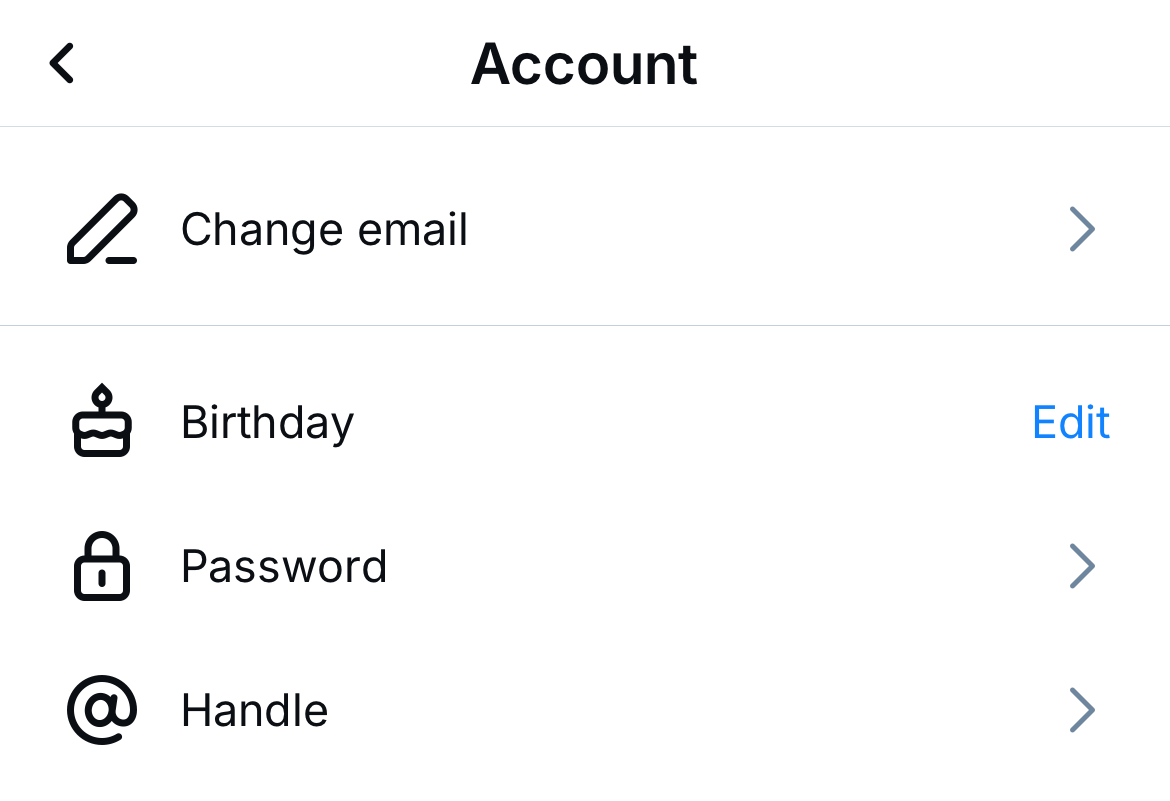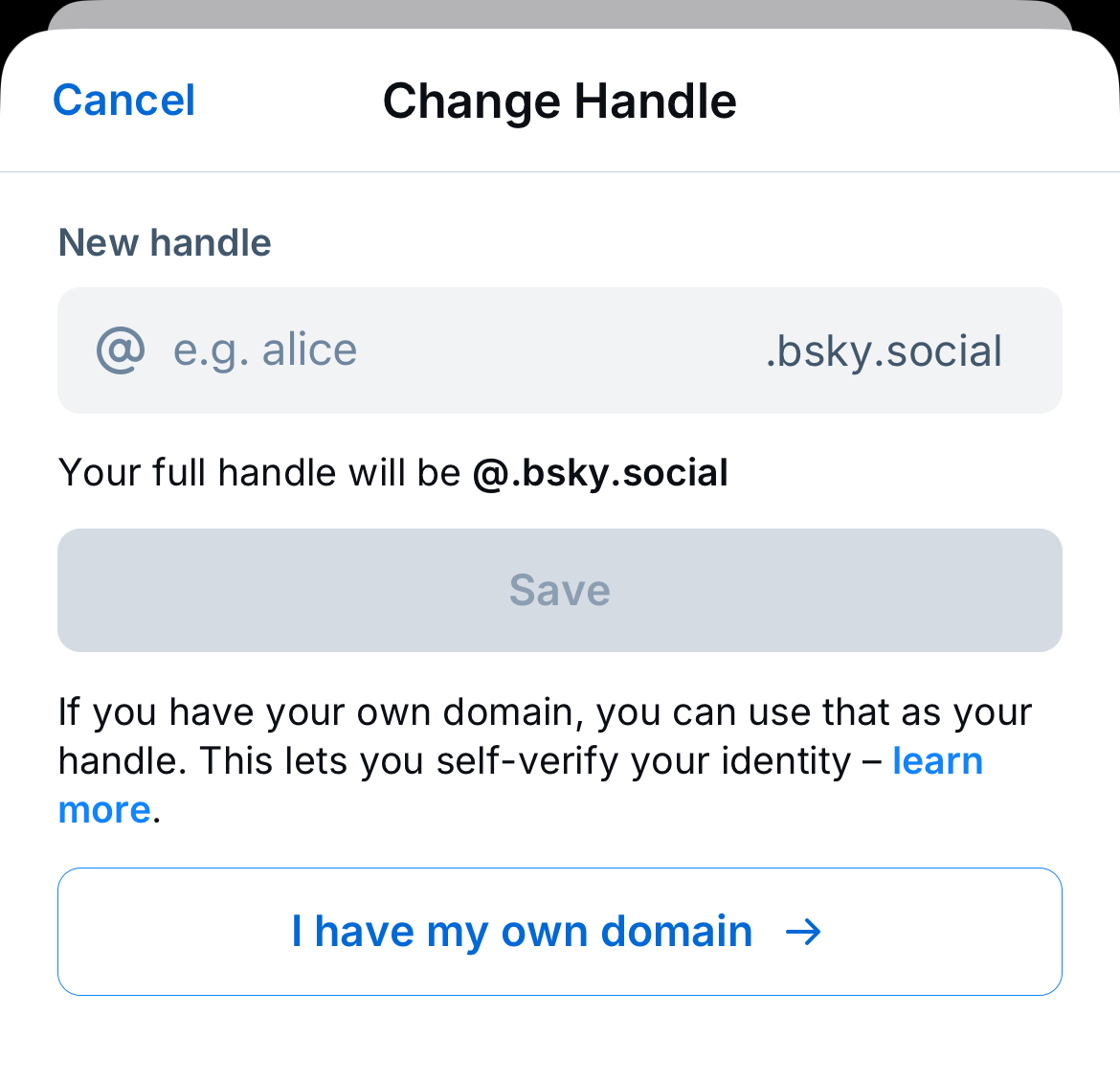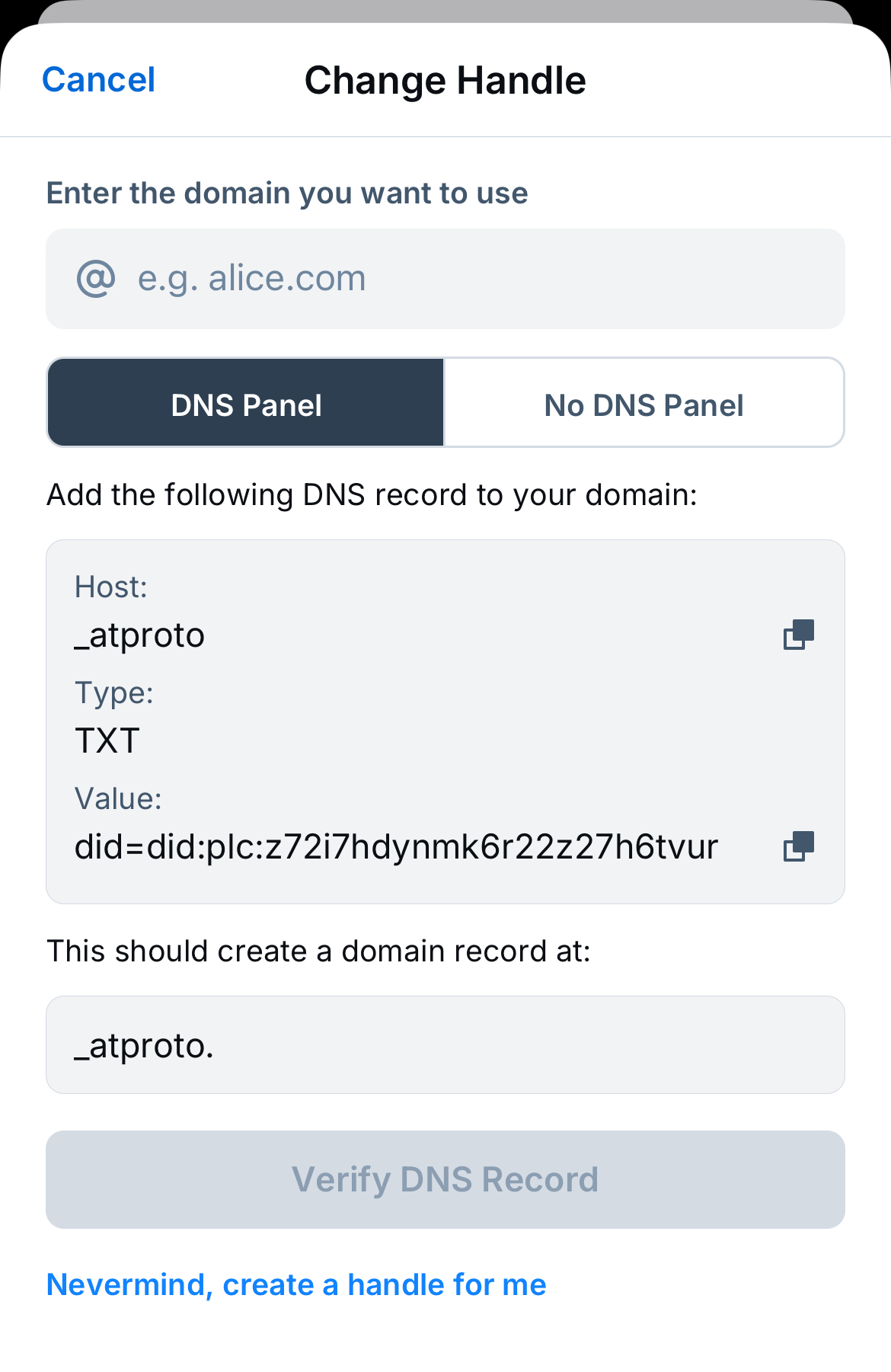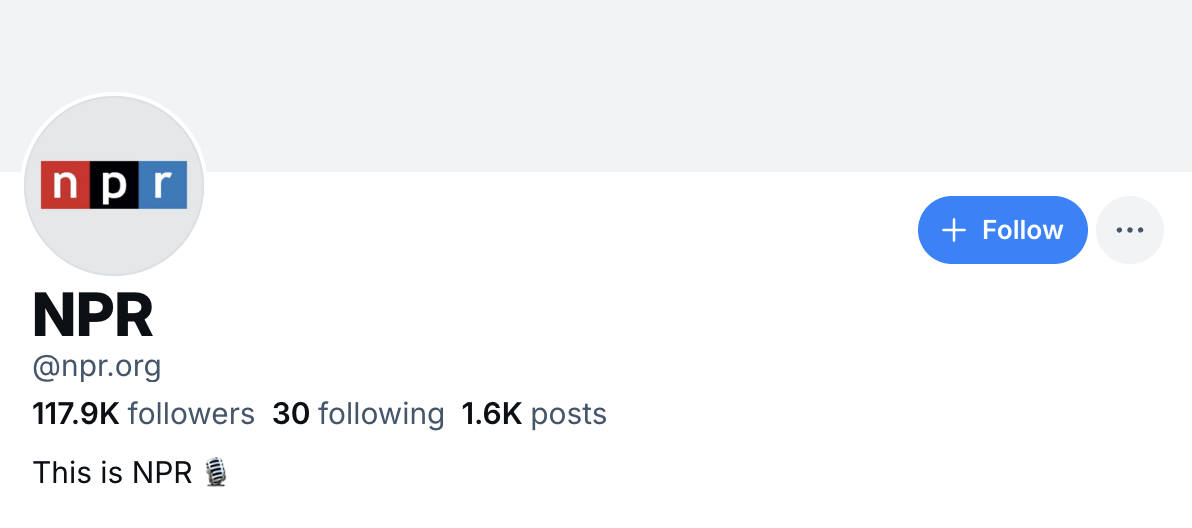How to verify your Bluesky account
Apr 28, 2023
by Emily Liu
On Bluesky, you can set your website as your username. This is one form of verification on Bluesky. We highly recommend that official organizations and high-profile individuals do this.
If you work for an organization with an IT team, you can send them a link to this guide and they can likely help you set this up.
How do I set a website as my username?
By default, Bluesky usernames end with the bsky.social suffix, but you can set your website as your username. For example, the Bluesky team’s official account has the username @bsky.app, NPR has the username @npr.org, and U.S. Senators have verified their accounts with senate.gov.

The screenshots below will show you how to set your website as your username in your mobile app, but similar steps apply on desktop.
-
First, create a Bluesky account. If you're planning on setting your website as your username, then pick any placeholder username when you sign up.
-
Open the left side menu. Click “Settings," then "Account," then "Handle."

-
On the “Change my handle” screen, click “I have my own domain.”

-
Now, you’ll have a screen that looks like this. This includes information that you will need to add to your domain registrar.

-
Navigate back to your domain registrar, which is the company you bought your domain from (Namecheap, Google Domains, etc.). The specific steps here depend on which company you used, but you’ll want to navigate to DNS management for your domain. This might be under an “Advanced DNS” tab.
Advanced: If you're using a hosting company other than the registrar, for example Cloudflare, navigate there to add your TXT record, not your original registrar.

-
We want to add a TXT (text) record to your domain. Step 3 above contains all of the information you’ll need to add to your domain. The DID value is public and not sensitive information.
- Set the domain:
_atproto - Set the type: TXT
- Set the value field (also sometimes called “data”), except use your own DID value:
did=did:plc:[your value here]
- Set the domain:
-
After you add the TXT record, wait a couple of minutes for the change to propagate across the internet. Then, just click “Verify DNS Record.” You’re done! Check your Bluesky profile to see if it has updated. Remember, DNS propagation might take some time.
-
Congratulations, you just set your website as your username and verified your account!
Any tags or mentions with your old handle will still point to your account.
Update as of December 12, 2024: If you change your default Bluesky username (with the .bsky.social suffix) to a website URL, your old .bsky.social username will be reserved for you. You no longer need to create a second account to reserve your most recent .bsky.social username. For every account, only your most recent .bsky.social username is reserved for you, and this reservation does not expire.
How can I set a subdomain as my handle?
Let's take this example: you work for newspaper.com, and you want to set your Bluesky username to be @me.newspaper.com. Here's how.
Follow the above steps, but for Step 6, your TXT record will be slightly different:
- Set the domain:
_atproto.me(Note that this includes the subdomain you're using.) - Set the type: TXT
- Set the value field (also sometimes called “data”), except use your own DID value:
did=did:plc:[your value here]
How can I set and manage multiple subdomain handles?
Organizations like newsrooms or companies may want to verify multiple affiliated individuals' accounts via subdomains. For example, a newsroom could set its journalists' handles to be @name.newsroom.com, or have multiple accounts for different verticals like @sports.newsroom.com. But managing many individual subdomains via TXT records can be cumbersome. In that case, you can use a non-DNS option by resolving multiple handles via HTTP under a .well-known route.
Note: This section is intended for a developer audience, and most organizations' tech teams are able to implement this easily. You can also reach us for assistance at support@bsky.app.
Instead of using DNS TXT records, you can return each account's DID from the route https://${handle}/.well-known/atproto-did. The expected payload is a DID (such as did:plc:abcdef...) with content-type text/plain. The handle resolution function explicitly expects a HTTP 200 OK status.
This is a code snippet for how handle resolution is implemented:
async function resolveHandle(handle: string) {
const res = await fetch(`https://${handle}/.well-known/atproto-did`)
const did = await res.text()
assert(typeof did === 'string' && did.startsWith('did:'))
return did
}
These handles are revalidated periodically. For handles that get invalidated, all of the account's data will still be secure — the owner will not lose any posts, followers, etc. We will provide an in-app option to simply revalidate or pick a new handle.
What’s a custom domain?
A custom domain is a unique name that identifies a website on the internet. For example, Bluesky’s domain is bsky.social.
Every device that connects to the internet has a unique IP address that identifies it. But it’s much easier to remember bsky.social instead of a series of numbers. The Domain Name System (DNS) acts like a phonebook for the internet and points a domain like bsky.social to its IP address, so we don’t have to remember the numbers ourselves.
Domains can be further divided into subdomains. For example, if your domain was example.com but you had a blog hosted at blog.example.com, then blog is the subdomain.
Why does Bluesky use domains as usernames, and why would I want to do this?
The AT Protocol, which the Bluesky app is built upon, was designed to use domains for multiple reasons:
-
Identity: Bluesky is just one application built on top of the AT Protocol. Let’s say you set your handle to
example.comon Bluesky. You’ll be able to use that same handle across all applications built on the AT Protocol (and there’s a growing number!). Now, you no longer have to list five different usernames based on what was available at the time you signed up for an app — just use your domain! -
Verification: Websites have a long history of verification already, so using domains borrows their authority. For example, a newsroom like NPR could set their handle to be
@npr.org. Then, any journalists that NPR wants to verify could use subdomains to set their handles to be@name.npr.org. Brand accounts could set their handle to be their domain as well.
-
Portability: Maybe you want to switch to a different server. Then, there’s no need to switch your handle from something server-specific if you’re using your domain as your handle.
Read our previously published blog post on domain names as handles here for more information.
I don't own a domain. How can I get one?
You can purchase and manage domains directly through Bluesky here. With this, you can easily set a custom domain as your Bluesky handle and much more. You can read more about the service here.
You can also directly purchase a domain from any ICANN-accredited domain registrar or reseller, like Namecheap or Google Domains. Domains are unique, so you must choose one that hasn’t already been registered by someone else. During registration, you’ll likely pay an annual fee and provide personal information. Note that this isn’t required to join Bluesky; you could use our server’s off-the-shelf naming (in the format of @name.bsky.social) if you prefer.
Your personal information is used to populate the WHOIS directory, which is a searchable database that holds information on domain ownership. You might prefer to keep your information private for various reasons — in that case, most domain registrars offer WHOIS privacy protection as a service.